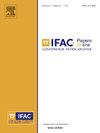元种群SIHURD模型
Q3 Engineering
引用次数: 0
摘要
我们增强了Bica等人(2022)发表的SIHURD模型,并提出了个体在离散空间斑块之间移动的元种群传染病数学监测模型。我们将环境划分为有限数量的空间斑块(例如相邻的城市),这些空间斑块保持了同质性特征。我们将本文提出的增强SIHURD模型应用于每个空间斑块。该模型的新颖之处在于引入了代表个体在空间斑块之间的旅行速率的参数,这些参数取决于个体的疾病状态。此外,它假设个体在斑块之间旅行时不会改变其疾病状态。我们的研究使用再现数R0k,对于每个空间斑块,k = 1,2,…。, n, (n >;1)整数,表示易感人群中受感染个体产生的继发性病例的平均数目。当R0k≤1时,系统才有一个无病平衡点。相比之下,如果罗克>;1、系统具有地方性平衡点。繁殖数R0k对于了解传染病的传播至关重要,可以为有效控制疫情的措施提供信息。斑块之间的迁移从根本上改变了斑块内地方性平衡的行为,使其在所提出的模型中不稳定。本文章由计算机程序翻译,如有差异,请以英文原文为准。
A metapopulation SIHURD model⁎
We enhance our SIHURD model published in Bica et-al (2022) and propose a metapopulation infectious disease mathematical monitoring model where individuals move between discrete spatial patches. We divide the environment into a finite number of spatial patches (e.g., adjacent cities), which preserve homogeneity characteristics. We apply the enhanced SIHURD model presented in this article to each spatial patch.
The novelty of this model lies in introducing parameters that represent individuals’ travel rates between spatial patches, which depend on their disease status. In addition, it assumes that individuals do not change their disease status while travelling between patches.
Our study uses the reproduction number, R0k, for each spatial patch, k = 1, 2, . . . , n, (n > 1) integer, which represents the average number of secondary cases produced by an infected individual in a susceptible population. The system has only a disease-free equilibrium point if R0k ≤ 1. In contrast, if R0k > 1, the system has an endemic equilibrium point. Reproduction numbers R0k are crucial for understanding the spread of infectious diseases and can inform measures to control outbreaks effectively.
Migration between patches fundamentally alters the behaviour of the endemic equilibrium within a patch, rendering it unstable in the proposed model.
求助全文
通过发布文献求助,成功后即可免费获取论文全文。
去求助
来源期刊

IFAC-PapersOnLine
Engineering-Control and Systems Engineering
CiteScore
1.70
自引率
0.00%
发文量
1122
期刊介绍:
All papers from IFAC meetings are published, in partnership with Elsevier, the IFAC Publisher, in theIFAC-PapersOnLine proceedings series hosted at the ScienceDirect web service. This series includes papers previously published in the IFAC website.The main features of the IFAC-PapersOnLine series are: -Online archive including papers from IFAC Symposia, Congresses, Conferences, and most Workshops. -All papers accepted at the meeting are published in PDF format - searchable and citable. -All papers published on the web site can be cited using the IFAC PapersOnLine ISSN and the individual paper DOI (Digital Object Identifier). The site is Open Access in nature - no charge is made to individuals for reading or downloading. Copyright of all papers belongs to IFAC and must be referenced if derivative journal papers are produced from the conference papers. All papers published in IFAC-PapersOnLine have undergone a peer review selection process according to the IFAC rules.
 求助内容:
求助内容: 应助结果提醒方式:
应助结果提醒方式:


